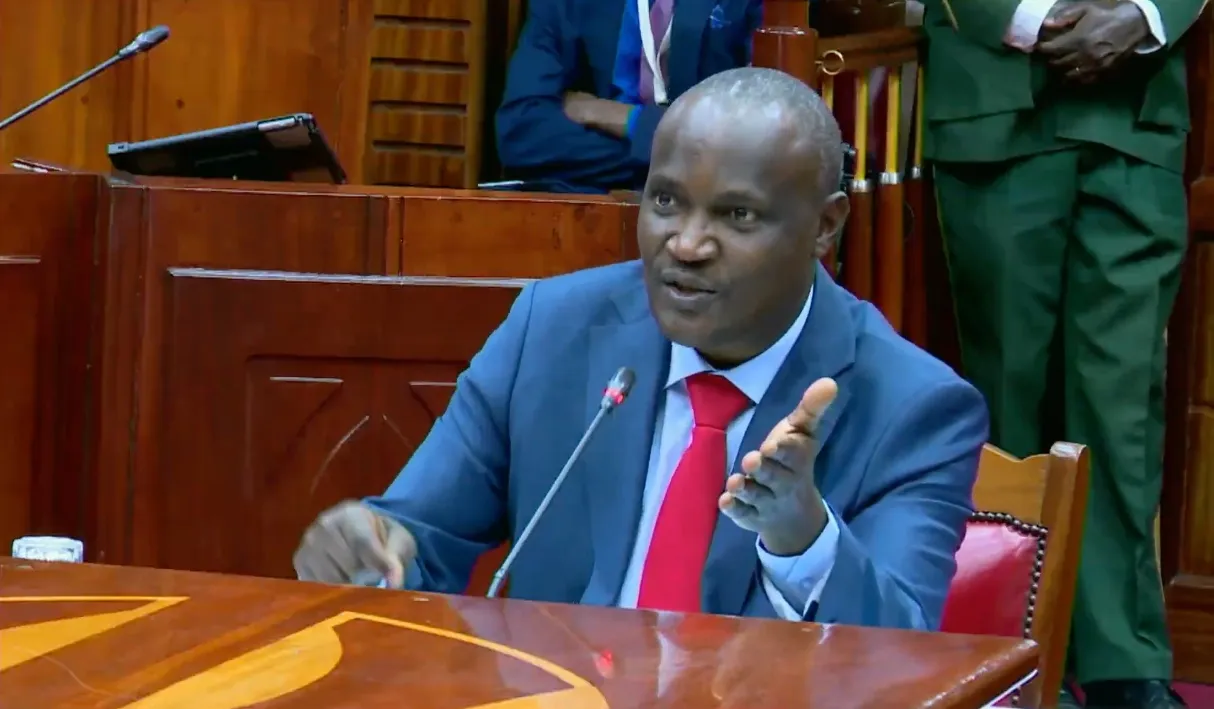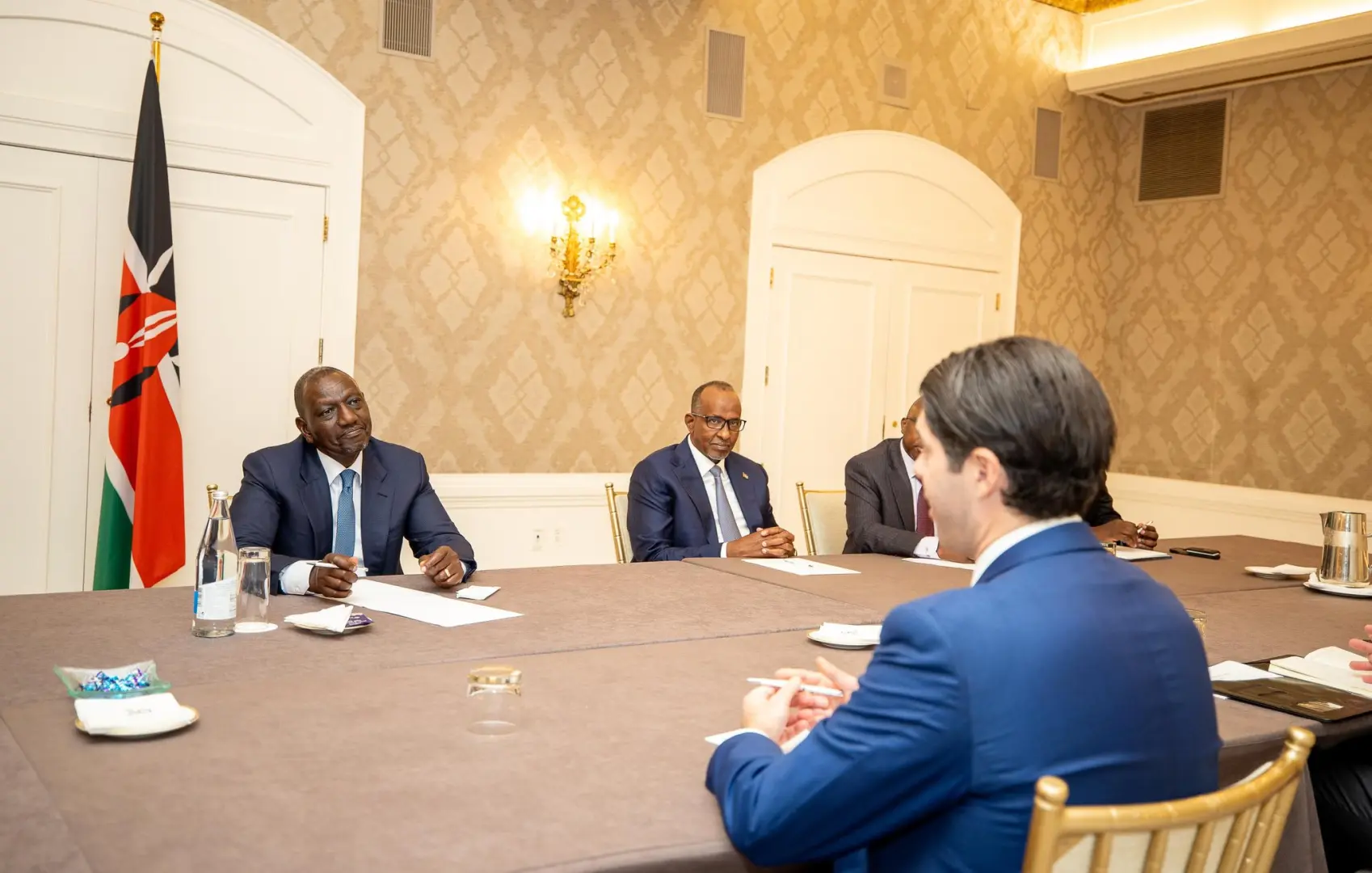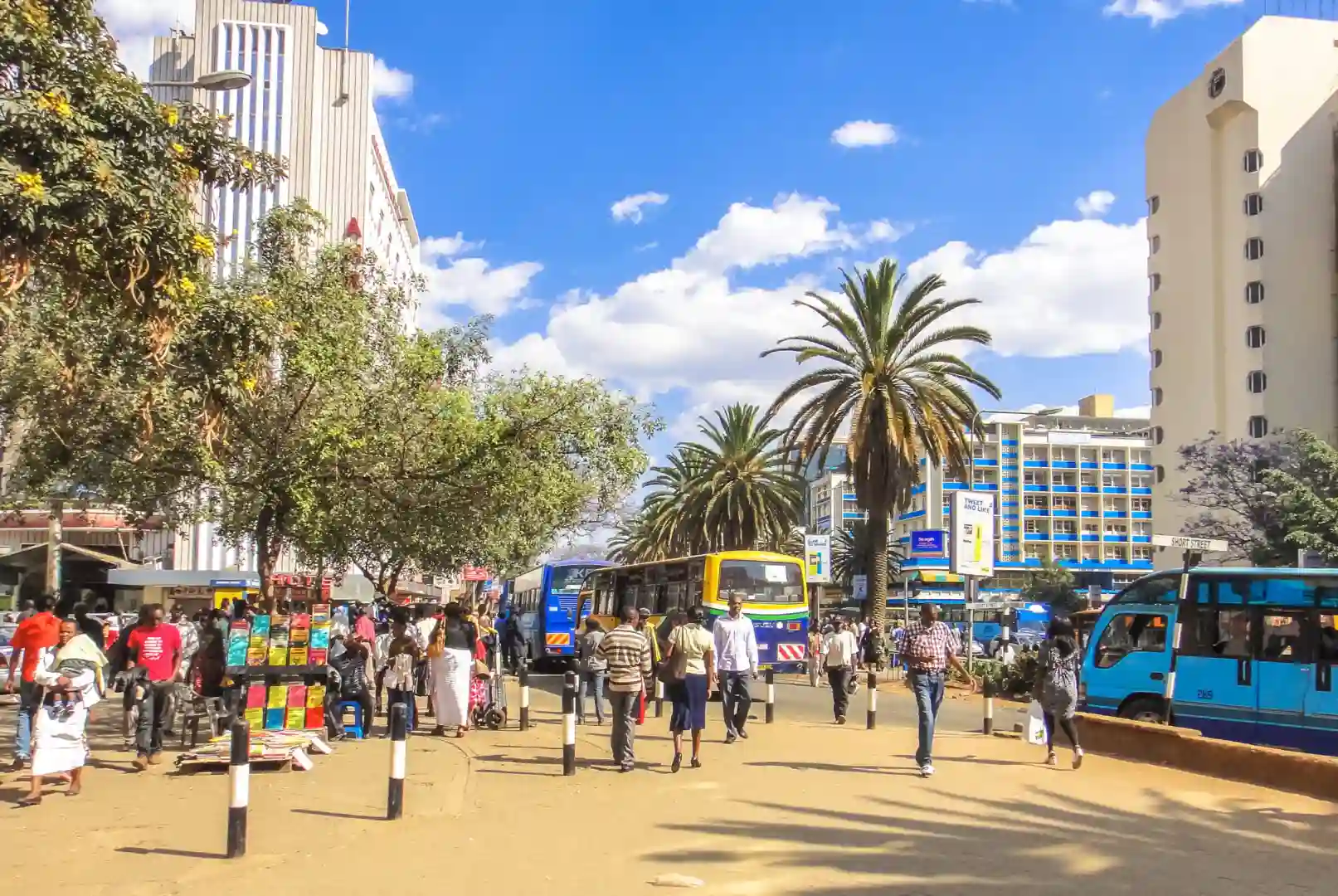Today, the Kenyan Parliament stands poised for a pivotal moment as Treasury Cabinet Secretary John Mbadi unveils the KSh 4.2 trillion (approximately $32.3 billion) budget for the 2025/2026 financial year. This announcement marks a critical juncture for President William Ruto’s administration, setting the nation’s fiscal direction amidst a complex global economic landscape and pressing domestic needs. As the government outlines its spending priorities and revenue-raising measures, millions of Kenyans are listening intently, hopeful for a future that alleviates the current economic pressures and delivers on the promise of a transformed economy.
This budget is not just a financial document; it is a declaration of intent, a detailed blueprint of how the government plans to navigate the intricate path of growth, development, and social welfare for its over 55 million citizens. It is CS Mbadi’s inaugural budget presentation as the second finance minister under the Kenya Kwanza administration, carrying the weight of public expectations and the responsibility of charting a sustainable economic course.
The KSh 4.2 Trillion Blueprint: An Overview of the 2025/2026 Budget
The proposed KSh 4.2 trillion budget for the 2025/2026 financial year represents a significant commitment to public expenditure, reflecting a 10 percent increase from the revised KSh 3.9 trillion budget estimates for FY 2024/2025. This expansion aims to accelerate the government’s ambitious development agenda, focusing on key sectors identified under the Bottom-Up Economic Transformation Agenda (BETA).
However, the sheer scale of the budget immediately brings to the fore the formidable challenge of financing it. The exchequer plans to fund this expansive outlay through a combination of ordinary revenue (primarily taxes), grants from international partners, fees charged for government services (Appropriations-in-Aid), and, crucially, substantial borrowing.
A breakdown of the financing strategy reveals the government’s intent:
- Tax Collection Target: A formidable KSh 2.7 trillion is expected from tax collection, accounting for approximately 64 percent of the total funding requirement. This target underscores the Kenya Revenue Authority’s (KRA) intensified efforts to broaden the tax base and enhance compliance.
- Appropriations-in-Aid (A-i-A): An additional KSh 560 billion is projected from government levies and fees, representing non-tax revenues generated by various state departments and agencies.
- Total Expected Revenue: These two primary revenue streams combine to approximately KSh 3.3 trillion, leaving a considerable gap.
- Grants: Foreign aid and grants from international partners are expected to contribute KSh 46.9 billion.
- Budget Deficit: Even with these revenue streams, a significant budget gap of nearly KSh 900 billion remains. After accounting for grants, the final deficit requiring financing through borrowing stands at approximately KSh 876 billion (around $6.7 billion).
This deficit is the pivot around which much of the budget debate will revolve, highlighting the government’s reliance on debt to bridge the gap between its spending ambitions and its revenue generation capabilities.
Fueling the Nation: Revenue Mobilization and the Taxpayer’s Burden
The KSh 2.7 trillion tax collection target is central to the government’s fiscal strategy. Meeting this ambitious goal requires both broadening the tax base and improving compliance, leading to various initiatives by the Kenya Revenue Authority (KRA).
KRA’s Intensified Efforts and Digital Push:
The KRA has been on an aggressive drive to meet its targets. Earlier in Q1 2025 (July 2024 to April 2025), KRA announced a significant milestone, collecting KSh 2.112 trillion, achieving 96.5 percent of its target for that period. This marked a 6.1 percent increase from the previous financial year, demonstrating a positive growth trend despite challenging economic conditions.
Key initiatives by the KRA to bolster revenue include:
- Tax Amnesty Programme: This program, designed to encourage taxpayers to settle outstanding dues, generated KSh 13.5 billion and waived KSh 164.9 billion in penalties and interest, benefiting over three million taxpayers. This offers a chance for individuals and businesses to clear their records, bringing more people into the tax net.
- eTIMS System: The electronic Tax Invoice Management System has been critical in enhancing VAT fraud detection through digital invoicing and reporting. This move towards digitalization aims to plug revenue leakages and improve transparency.
- Dispute Resolution: KRA’s efforts in resolving tax disputes have also yielded results, helping recover KSh 21.9 billion in revenue between January and March 2025.
The Human Face of Taxation: Controversies and Costs:
While these measures are designed to enhance fiscal stability, they often come with significant implications for ordinary Kenyans and businesses. CS Mbadi’s earlier remarks about “not trusting Kenyans to pay taxes at will” underscore a deep-seated public sentiment of distrust regarding tax utilization and government accountability. This perception has fueled public discontent, leading to widespread protests in previous years, sparked by new taxes introduced in finance bills, such as the initial 16% sales tax proposal. Many Kenyans feel that the tax burden is disproportionately falling on the small formal sector, which accounts for less than 20% of jobs, while government inefficiencies and corruption persist. As one Nairobi shopkeeper lamented, the past year has been the “toughest” in decades, with taxes increasing without perceived benefits. Kwame Owino from the Institute for Economic Affairs echoed this sentiment, suggesting Kenya has reached the “limit of how much tax Kenyans are willing to bear.”
The Impact of Increased Car Import Duty:
A specific area of concern for many Kenyans is the increased duty fees on new cars. Effective July 1, 2025, the KRA implemented sweeping changes to car import duties under the Current Retail Selling Price (CRSP) system. These changes have significantly impacted the cost of importing used vehicles in Kenya, a common practice for many middle-class families and small business owners.
- Price Hikes: Some popular small car models, often favored for taxi services and personal use due to their fuel efficiency, face tax increases of up to 145%. This is a severe blow to transport operators and individuals.
- Cascading Effect: The changes include an increase in the general import duty rate from 25% to 35%, a 40% relative increase that forms the foundation for all other tax calculations. Excise duty rates have also escalated, reaching up to 35% for some vehicle categories, and the 16% Value Added Tax (VAT) is applied cumulatively on all these duties, leading to substantially higher final prices.
- Economic Implications: These increased taxes directly impact the transport and logistics sectors, which are vital inputs for most industries. Higher vehicle acquisition costs can deter investment, slow fleet modernization, and ultimately lead to higher transport costs for goods and services, affecting the cost of living for all Kenyans. The Kenya Auto-Bazaar Association (KABA), representing second-hand car dealers, has voiced significant concerns, highlighting the burden on an industry that supports many livelihoods. This policy, while aiming to raise revenue or potentially protect a nascent local assembly industry, risks hindering capital formation and overall economic growth by making productive assets more expensive.
Appropriations-in-Aid (A-i-A): Unpacking Government Fees:
The KSh 560 billion target from Appropriations-in-Aid refers to non-tax revenues collected by government ministries, departments, and agencies (MDAs) from services they provide. This includes various fees, charges, and licenses. For example, fees for renewing driving licenses, passport application fees, land registration charges, or charges for regulatory approvals contribute to A-i-A. This revenue source is typically linked to specific services and is generally considered more predictable than taxes, as it’s directly tied to economic activity and demand for government services. While it helps supplement the budget, it also means that the cost of accessing government services can rise, impacting businesses and citizens.
Bridging the Gap: The Dynamics of Debt Financing
With a total projected revenue of KSh 3.3 trillion against a KSh 4.2 trillion budget, a significant deficit of KSh 900 billion remains. Even with grants, the budget deficit to be financed through borrowing stands at a substantial KSh 876 billion. This reliance on borrowing underscores Kenya’s ongoing fiscal challenges and the delicate balancing act required to fund its development ambitions.
Domestic Borrowing: The Home Front (KSh 592 billion):
The government plans to borrow more than two-thirds of this deficit locally, targeting KSh 592 billion from the domestic market.
- Implications: While domestic borrowing reduces exposure to foreign exchange rate fluctuations, it carries its own set of risks. A key concern is the potential for “crowding out” private sector credit. When the government borrows heavily from local banks and financial institutions, it competes with private businesses and individuals for available funds. This increased demand for credit can drive up interest rates, making it more expensive for the private sector to borrow and invest.
- Impact on Citizens and Businesses: For ordinary Kenyans, higher interest rates mean more expensive loans for homes, education, or starting small businesses. For existing businesses, it increases operational costs, potentially stifling expansion and job creation. Studies on Kenya’s domestic debt have shown a positive relationship between domestic debt and interest rates, confirming this risk.
- Fiscal Deficit and Interest Rates: The study on “Relationship Between Domestic Debt and Interest Rate in Kenya” also found a positive relationship between fiscal deficit and the country’s interest rate, further highlighting the interconnectedness of government spending, borrowing, and the cost of credit.
External Borrowing: The Global Stage (KSh 284 billion):
The remaining KSh 284 billion will be sourced from external borrowing.
- Challenges: While external borrowing can offer lower interest rates and longer repayment periods compared to domestic sources, it introduces exchange rate risk. A depreciation of the Kenyan Shilling against major currencies like the US dollar can significantly increase the cost of servicing foreign-denominated debt, even if the original interest rate was lower.
- Debt Sustainability: Kenya’s public debt has been a persistent concern, with projections exceeding 60% of GDP. Debt servicing obligations are already substantial, projected to consume over KSh 1.37 trillion in FY2025/2026, an 11% increase from the previous year. This high cost of debt servicing risks “crowding out” critical spending on development, health, and education, diverting essential resources away from direct public benefit.
- Fiscal Momentum: Recent reports have highlighted Kenya’s “high risk of debt distress,” contextualized by public discontent over perceived extravagant government spending amidst citizens grappling with soaring costs. The balance between necessary borrowing for development and ensuring long-term debt sustainability remains a delicate tightrope for the Treasury.
The Bottom-Up Promise: Budget Aligned with BETA
The 2025/2026 budget is deeply anchored in President William Ruto’s Bottom-Up Economic Transformation Agenda (BETA). BETA is the government’s flagship blueprint for economic turnaround and inclusive growth, designed to uplift Kenyans from the grassroots. It emphasizes a value chain approach, targeting sectors with high impact to drive recovery and ensure that economic benefits trickle down to the majority of the population.
BETA is built on five core pillars, and the budget’s allocations are expected to reflect these priorities:
- Agriculture: Investing in enhanced agricultural productivity to boost food security and reduce the cost of living. This includes supporting smallholder farmers through improved access to inputs, extension services, and markets. The aim is to make farming a profitable venture, creating jobs and reducing hunger.
- Micro, Small and Medium Enterprise (MSME) Economy: As the backbone of the economy, MSMEs are targeted for significant support through improved access to finance, policy reforms, and market linkages to drive industrialization and job creation. The budget will likely allocate resources towards initiatives like the Hustler Fund and other credit schemes.
- Housing and Settlement: Expanding access to affordable and social housing, particularly through public-private partnerships, is a key focus. This pillar aims to provide decent shelter for millions of Kenyans and stimulate the construction sector, creating jobs.
- Healthcare: Improving access to quality healthcare services and expanding Universal Health Coverage (UHC) are critical. The health sector, for instance, has seen a substantial 72% increase in its budget allocation from KSh 118 billion in FY2024/2025 to KSh 204 billion in FY2025/2026, though a significant portion is expected to be financed through citizen contributions to the Social Health Insurance Fund.
- Digital Superhighway and Creative Economy: Leveraging technology and digitalization to create jobs, enhance service delivery, and foster innovation. This includes expanding internet connectivity and supporting digital platforms for business and employment.
These targeted investments are designed to create jobs at the bottom of the economic pyramid, expand the tax base, improve foreign exchange balances, and foster inclusive growth. The budget reflects a commitment to directing resources where they can have the most impact on ordinary citizens’ lives, aiming to transform their economic realities.
CS John Mbadi: A First Budget, A Heavy Mandate
For Cabinet Secretary John Mbadi, this budget presentation is a significant milestone. Having assumed the role of Treasury CS, he steps into a position that demands both seasoned financial acumen and political dexterity. Mbadi brings a wealth of experience to the table, having served an extensive career in public service.
His impressive resume includes:
- Legislative Leadership: A former elected Member of Parliament (MP) for Suba South Constituency (and previously Suba and Gwassi Constituencies), he has a deep understanding of parliamentary processes.
- Key Parliamentary Roles: He has served as Assistant Minister in the Office of the Prime Minister and as the Leader of Minority in the National Assembly, giving him a unique perspective on both government and opposition priorities.
- Financial Expertise: Notably, he chaired the Public Accounts Committee in the National Assembly, a critical oversight body, and was a member of the Legislative Taskforce responsible for drafting the Public Finance Management Act of 2012, a foundational piece of legislation governing public finance in Kenya. He is also a Certified Public Accountant (FCPA) with 28 years of experience.
Mbadi’s background as an accountant and his extensive legislative experience position him uniquely to navigate the complexities of budget formulation and parliamentary approval. However, his first budget comes at a challenging time, requiring him to balance the government’s ambitious development agenda with the realities of high public debt, a demanding revenue target, and a populace grappling with the rising cost of living and skepticism about the efficacy of government spending. His task is not just to present numbers but to convince Kenyans that the sacrifices asked of them today will lead to a better tomorrow.
Monetary Policy and Fiscal Strategy: A Dual Approach to Economic Stability
The budget is presented within a broader macroeconomic context shaped by the Central Bank of Kenya (CBK). The CBK plays a crucial role in maintaining price stability, fostering a stable financial system, and supporting the government’s economic policy objectives for growth and employment.
The news report highlights that the CBK has lowered its base lending rate for the sixth time, aiming to spur private sector credit. Indeed, the Central Bank Rate (CBR) has gradually eased from 13.0 percent in August 2024 to 10.0 percent in April 2025. This monetary policy easing is a response to falling inflation, which dropped to 4.1 percent in April 2025 from a peak of 9.6 percent in October 2022, and a stable exchange rate.
- Desired Impact: The CBK’s decision to lower the CBR is intended to make borrowing cheaper for commercial banks, which should, in turn, reduce lending rates for businesses and individuals. The hope is that lower borrowing costs will stimulate private sector investment, boost economic activity, and create jobs. For an aspiring entrepreneur, cheaper loans can be the difference between realizing a dream and shelving it.
- The Reality of Credit Access: However, a key challenge remains: despite the CBK’s actions, commercial lending rates have remained stubbornly high, averaging 17.22 percent. This suggests that the transmission mechanism from monetary policy easing to actual credit availability and affordability for businesses and individuals is not as direct as desired. Factors like perceived risk, banks’ cost of funds, and non-performing loans can keep commercial rates elevated.
- Fiscal-Monetary Interplay: The budget’s reliance on domestic borrowing directly impacts the effectiveness of monetary policy. Heavy government borrowing can absorb liquidity from the financial system, reducing the pool of funds available for the private sector and undermining the CBK’s efforts to spur credit growth. Mbadi’s budget, therefore, needs to strike a delicate balance to ensure that fiscal demands do not negate the positive impact of monetary easing.
The Kenyan Citizen: Navigating the Economic Landscape
Ultimately, the success or failure of this KSh 4.2 trillion budget will be judged by its impact on the daily lives of Kenyans. For many, the past year has been characterized by significant economic hardship.
- Soaring Costs of Living: Despite a general decline in inflation, the prices of essential goods and services remain a major concern. Christine Naswa, a roadside vegetable vendor and mother of five in Nairobi, embodies this struggle, noting, “The economy is very poor right now. There is no money in Kenya.” Food prices, fuel costs, and utility bills continue to strain household budgets. Inflation in February 2025 stood at 3.5%, driven by higher prices of necessities like maize flour and sugar.
- Increased Taxation and Stagnant Wages: Kenyans feel the pinch of increased taxation, particularly from the Finance Act 2023, which introduced measures like the 1.5% housing levy and raised VAT on petroleum products. These measures increase production costs, which businesses pass on to consumers. Simultaneously, real wages have largely stagnated, meaning people’s earnings are not keeping pace with rising expenses, leading to a sharp decline in purchasing power.
- Reliance on Debt: The struggle to make ends meet has pushed many Kenyans to rely on various forms of debt, with mobile loans and salary advances becoming a lifeline for households. This reliance on short-term credit can create a cycle of debt, further exacerbating financial stress.
- Public Discontent: The widespread discontent, fueled by soaring expenses, a limited job market, and persistent corruption scandals, has led to protests and a sense of disillusionment with the government. There is a strong belief among many citizens that existing problems could be resolved through serious action against corruption, which remains “very deeply entrenched.”
The budget, therefore, is not merely an economic exercise but a social contract. Its ability to restore public trust, alleviate economic burdens, and visibly improve livelihoods will be crucial for the government to maintain social stability and secure the buy-in of its citizens for the long-term transformation envisioned.
Conclusion: A Vision of Growth, a Path Paved with Challenges
Treasury Cabinet Secretary John Mbadi’s presentation of the KSh 4.2 trillion budget for the 2025/2026 financial year is a moment of both ambition and apprehension for Kenya. It is a bold statement of intent to drive growth and development, deeply aligned with the government’s Bottom-Up Economic Transformation Agenda. The increased allocations to critical sectors like health, and the focus on empowering MSMEs and agriculture, reflect a commitment to a human-centered approach to development.
However, the path ahead is paved with significant challenges. The heavy reliance on both domestic and external borrowing to bridge a substantial budget deficit will test the government’s fiscal management prowess, with implications for interest rates, private sector credit, and long-term debt sustainability. The ambitious tax collection targets, coupled with public fatigue over rising costs and existing tax burdens, demand transparent governance and a clear demonstration of value for taxpayers’ money.
Ultimately, the success of this budget will hinge on its ability to translate ambitious figures into tangible improvements in the lives of ordinary Kenyans. It calls for collective resilience, responsible leadership, and an unwavering commitment to equitable growth. As Parliament debates the proposals, the eyes of the nation, from the smallest business owner to the largest corporation, will be fixed on how this financial blueprint will shape their future, hoping for a journey towards a more prosperous, stable, and inclusive Kenya.
Ready to take your career to the next level? Join our dynamic courses: ACCA, HESI A2, ATI TEAS 7 , HESI EXIT , NCLEX – RN and NCLEX – PN, Financial Literacy!🌟 Dive into a world of opportunities and empower yourself for success. Explore more at Serrari Ed and start your exciting journey today! ✨
photo source: Google
By: Montel Kamau
Serrari Financial Analyst
12th June, 2025
Article, Financial and News Disclaimer
The Value of a Financial Advisor
While this article offers valuable insights, it is essential to recognize that personal finance can be highly complex and unique to each individual. A financial advisor provides professional expertise and personalized guidance to help you make well-informed decisions tailored to your specific circumstances and goals.
Beyond offering knowledge, a financial advisor serves as a trusted partner to help you stay disciplined, avoid common pitfalls, and remain focused on your long-term objectives. Their perspective and experience can complement your own efforts, enhancing your financial well-being and ensuring a more confident approach to managing your finances.
Disclaimer: This article is for informational purposes only and does not constitute financial advice. Readers are encouraged to consult a licensed financial advisor to obtain guidance specific to their financial situation.
Article and News Disclaimer
The information provided on www.serrarigroup.com is for general informational purposes only. While we strive to keep the information up to date and accurate, we make no representations or warranties of any kind, express or implied, about the completeness, accuracy, reliability, suitability, or availability with respect to the website or the information, products, services, or related graphics contained on the website for any purpose. Any reliance you place on such information is therefore strictly at your own risk.
www.serrarigroup.com is not responsible for any errors or omissions, or for the results obtained from the use of this information. All information on the website is provided on an as-is basis, with no guarantee of completeness, accuracy, timeliness, or of the results obtained from the use of this information, and without warranty of any kind, express or implied, including but not limited to warranties of performance, merchantability, and fitness for a particular purpose.
In no event will www.serrarigroup.com be liable to you or anyone else for any decision made or action taken in reliance on the information provided on the website or for any consequential, special, or similar damages, even if advised of the possibility of such damages.
The articles, news, and information presented on www.serrarigroup.com reflect the opinions of the respective authors and contributors and do not necessarily represent the views of the website or its management. Any views or opinions expressed are solely those of the individual authors and do not represent the website's views or opinions as a whole.
The content on www.serrarigroup.com may include links to external websites, which are provided for convenience and informational purposes only. We have no control over the nature, content, and availability of those sites. The inclusion of any links does not necessarily imply a recommendation or endorsement of the views expressed within them.
Every effort is made to keep the website up and running smoothly. However, www.serrarigroup.com takes no responsibility for, and will not be liable for, the website being temporarily unavailable due to technical issues beyond our control.
Please note that laws, regulations, and information can change rapidly, and we advise you to conduct further research and seek professional advice when necessary.
By using www.serrarigroup.com, you agree to this disclaimer and its terms. If you do not agree with this disclaimer, please do not use the website.
www.serrarigroup.com, reserves the right to update, modify, or remove any part of this disclaimer without prior notice. It is your responsibility to review this disclaimer periodically for changes.
Serrari Group 2025












